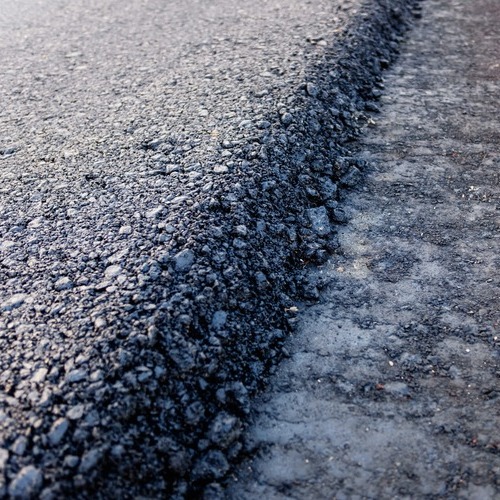
What are the differences between asphalt, cement, and concrete?
From driveways to parking lots and streets, we drive and park in the area without giving thought to what makes the surface – until it has potholes! So, is it asphalt, cement, or concrete? Admittedly, it can be a little difficult to determine what makes all three of these different, but if you’re considering asphalt overlay in Waco, TX it’s something you’ll need to understand beforehand. However, our team can be there to help. Give us a call at 254-716-8685 if you are looking for assistance.
What makes an asphalt overlay different?
Let’s review what makes up these substances that are used for driveways, parking lots, and streets:
- Asphalt: A black, gummy hydrocarbon, a crude oil byproduct, that is a mixture of bitumen and aggregate. An asphalt overlay is often applied afterward.
- Concrete: A mixture of an aggregate bound by cement binder that hardens and creates a rock-like appearance.
- Cement: A chemical substance that hardens as it sets and adheres to other materials, like concrete, binding them together.
An asphalt overlay is just as the name implies. It is a new pavement section that is typically between 1.5″ and 2″ thick installed over the existing surface. Think of it as a tablecloth! It fills any dings and scratches, creating a smooth surface.
Is it okay to overlay an asphalt driveway?
For a homeowner, a commercial property owner, or a city, repaving a driveway, parking lot, or roadway can be expensive. An asphalt overlay can be a money saver while extending the lifespan of the original surface. An asphalt overlay will fill in any small cracks and mend minor water damage temporarily until the budget is ready for the expense of removing and replacing the entire surface.
How long will an asphalt overlay last?
An asphalt overlay that is properly installed and well-maintained can have a lifespan of up to 15 years. The amount of traffic and the day-to-day weather conditions can have an impact on that lifespan. Areas where there are significant amounts of ice and snow can shorten the lifespan to a minimum of 8 years.
Is it okay to put new asphalt over old asphalt?
This will depend on the condition of the existing asphalt surface. As long as the structural integrity of the existing asphalt surface is still strong, installing an asphalt overlay will be okay. It is recommended to fill in cracks and holes before applying the asphalt overlay.
Are there disadvantages to having an asphalt overlay installed?
Yes, there are a few that should be considered before contracting to have an asphalt overlay installed. Among those disadvantages, the subgrade has underlying problems that are not addressed such as improper drainage and other issues. Once the asphalt overlay ages, the imperfections of the existing surface will cause the overlay to crack and become unstable.
What are the benefits of an asphalt overlay?
An asphalt overlay will provide benefits that include:
- A smooth surface
- A consistent color similar to the original surface
- Improved ride quality
- Reduced noise level
- Provides a longer lifespan, delaying the cost of a new surface
Is an asphalt overlay and resurfaced asphalt the same thing?
Yes, an asphalt overlay and resurfacing asphalt is the same thing. Both will repair any minor surface damages like small cracks, depressions, rutting that are caused by large vehicles, and water damage that can lead to potholes if not addressed.
How thick should an asphalt overlay be?
The recommended thickness of an asphalt overlay is 1.5 inches. Some asphalt overlays are less than the recommendation and won’t last as long, resulting in having another overlay installed.
What is an asphalt replacement?
An asphalt replacement is the process of removal and disposal of an existing surface and then installing a new layer of asphalt. Typically, this process is needed when the existing surface has serious damage like deep and wide cracks, deep potholes, or underlying issues to the base surface.
An asphalt replacement also allows the property owner to restructure their driveway or parking lot by rerouting drainage away from any structures that can improve accessibility.
Why is the surface of a driveway or parking lot important?
There are five key reasons why a driveway or parking lot should be kept in good repair:
1. Maximize Space and Overall Use
When it comes to parking lots, an asphalt overlay or repaving the space will maximize usage by allowing the ability to mark the parking lines.
2. Liability and Safety
A well-maintained parking lot with an asphalt overlay reduces liability and enhances overall safety with clear parking indicators for crosswalks, handicap spots, speed limit signs, and the parking spots themselves by making the surface better for the paint to stick.
3. Drainage and Pooling
An asphalt overlay will allow a parking lot to drain rainwater and melted ice and snow faster and better.
4. Curb Appeal and Property Value
For a private driveway or a parking lot open to the public, an asphalt overlay will improve the appearance and improve the property value.
5. Maintenance Costs
An asphalt overlay has an upfront expense, but it will minimize the maintenance expenses in the future.
In Summary
An asphalt overlay is a less expensive route to improving a driveway, parking lot, or even roadways. It can be done in less time so that the surface can be driven and parked on sooner. An asphalt overlay is an inconvenience, money, and time-saving method. And while that is a key characteristic in today’s economy, this isn’t a long-term fix, and eventually, a full reconstruction will be needed.
